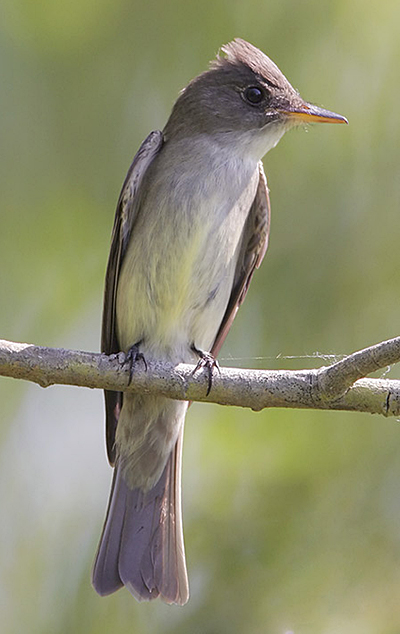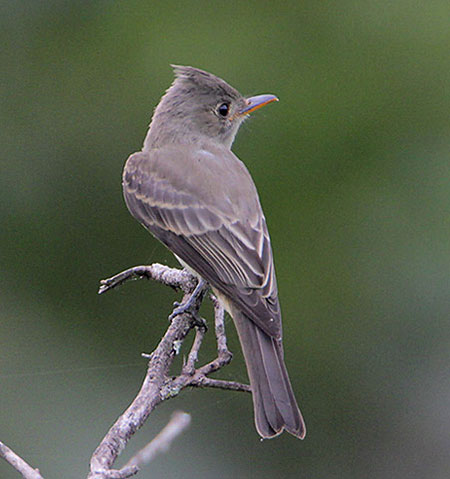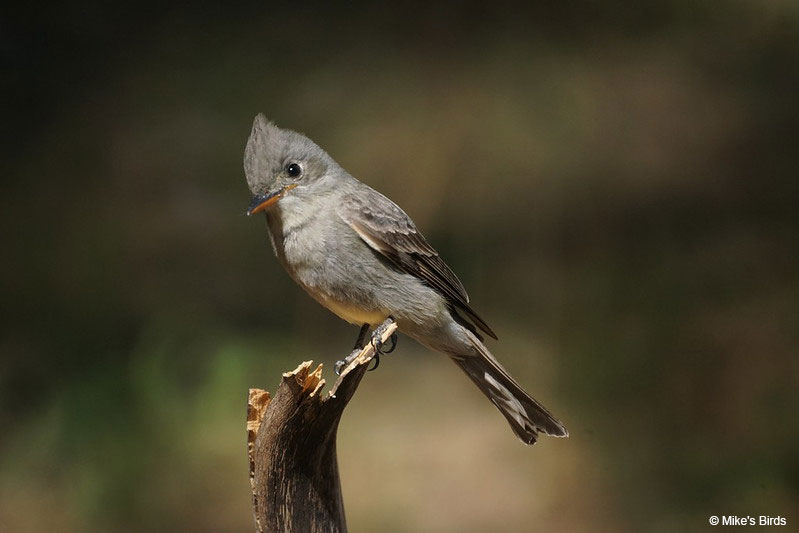While it is a year-round resident in Central America and much of Mexico, the Greater Pewee is migratory in its southwestern U.S. breeding range. Highly territorial during the breeding season, and sometimes on winter feeding grounds as well, the Greater Pewee uses both vocalizations and physical interactions to defend its territories.
Much remains to be learned about the life and ecology of Greater Pewees. It is assumed that they breed at age one, and that they may live to be six or seven years old, but further study is needed. Both inclement weather and predators can result in nesting failures.
On this page
Description of the Greater Pewee
BREEDING MALE
The Greater Pewee is a long-tailed flycatcher with olive upperparts, faintly olive underparts, a small crest, and an orange lower mandible.

Female
Sexes similar.
Seasonal change in appearance
Minimal.
Juvenile
Similar to adults but yellower below and has tawny wing bars.
Habitat
Pine and pine-oak forests.
Diet
Insects.

Photographs © Greg Lavaty
Behavior
Forages by watching from a perch and flying out to capture flying insects.
Range
Breeds in southeastern Arizona and southwestern New Mexico and winters in Mexico.
Fun Facts
Greater Pewees are aggressive in nest defense, chasing jays, squirrels, and other potential threats.
Greater Pewees defend large territories form other Greater Pewees. These can range in size from 17 to nearly 50 acres.
Vocalizations
A whistle that can be interpreted as a five-syllable “ho-say-maria”.
Similar Species
- Olive-sided Flycatchers have shorter tails and partly dark lower mandibles. Darker flanks.
Nesting
The nest is cup of grass, weeds, and other plant materials placed in the fork of a branch.
Number: 3-4.
Color: White with darker markings.
Incubation and fledging:
?- Young hatch at 8-12 days.
– Young fledge (leave the nest) at an unknown age but remain with the adults for some time.


